There have been hundreds of great artists from around the world, but here is my attempt to list the twenty five greatest that you should be aware of. If you know anything at all about art, this list is bound to infuriate you! Making the list was difficult as I had to leave many great artists out.
Remember this list is just one person's opinion…..
- Raphael
- Leonardo da Vinci
- Johannes Vermeer
- Michelangelo
- Caraveggio
- Diego Velázquez
- Rembrandt
- Peter Paul Rubens
- Jan Van Eyck
- Botticelli
- Salvador Dali
- Pablo Picasso
- Titian
- Paul Gaugin
- Lichtenstein
- Artemisia Gentileschi
- Albrecht Dürer
- Edward Hopper
- Vincent Van Gogh
- John Michelle Basquiat
- Gustave Klimt
- Vassily Kandinsky
- Hieronymus Bosch
- Pieter Bruegel the Elder
- Alphonse Mucha
1.Raphael
Italy 1483-1520
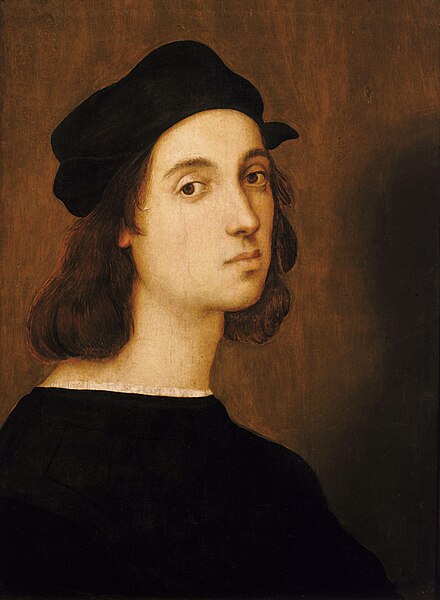
Self Portrait by Raphael

Raphael's 'The School of Athens'. In many ways the perfect painting.
Around the world many art lovers and scholars of art history consider Raphael to be the greatest of artists. Why? Firstly he was a painter who worked in the midst of arguably the greatest ever period of art - the High Renaissance in Italy. Secondly he was technically an amazing painter with tremendous command of composition and painterly skill. Thirdly he painted scenes with considerable intellectual content which feature the great thinkers of Western history such as Plato and Aristotle.
2. Leonardo Da Vinci
Italy 1452-1519

Leonardo

Leonardo's 'Ginevra de' Benci'
Leonardo, as he is affectionately known, helped to lay the foundations of all subsequent painting. Many of his most revered works are portraits which centuries later seem to offer a magical insight into the soul of the subject and in a curious way of all humanity. No other artist has quite the same effect.
3. Johannes Vermeer
Netherlands 1632-1675

Vermeer

The Milkmaid by Vermeer
Vermeer was a Dutch painter who brought realism and modesty to oil painting. Instead of the grand themes of Raphael we see a simple milkmaid pouring milk.
It is almost as if Vermeer elevates this simple woman to the same heights as the aristocratic figures painted by Leonardo and Raphael. If he was a lover of the common people then he was years ahead of his time.
4. Michelangelo
Italy 1475-1564
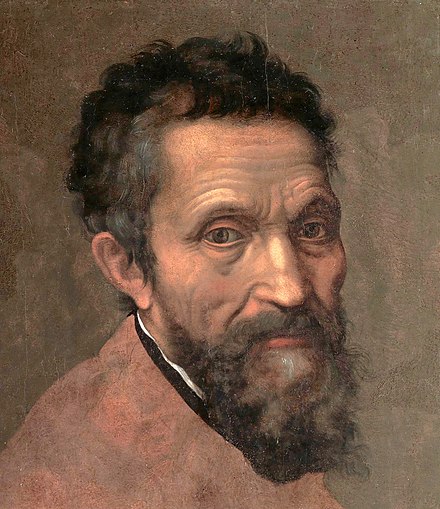
Michelangelo
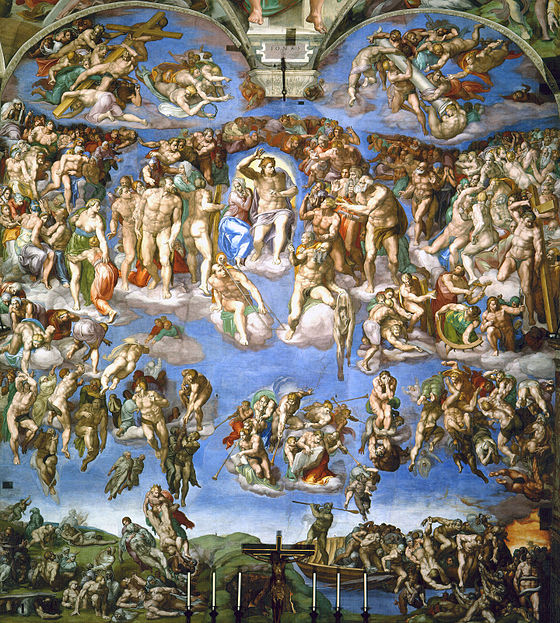
Michelangelo's Sistine Chapel
Yes, that ceiling. The ceiling of the Sistine Chapel is host to what may be the greatest single achievement of any artist. And Michelangelo held a low opinion of painting; it seems he preferred sculpture. His statue of David is often seen as one of the greatest works of Western art.
5. Caravaggio
Italy 1571-1610

Caravaggio

Caravaggio's 'Young Sick Bacchus'
It seems that Caravaggio was a man who would not be out of place in a Hollywood movie. His personality was such that he was involved in at least two violet clashes during his life. In one he committed murder, in the other he was apparently disfigured. When not fighting he developed an influential way of painting which used dark shadows to sculpt shapes.
6. Diego Velazquez
Spain 1599-1660

Velazquez
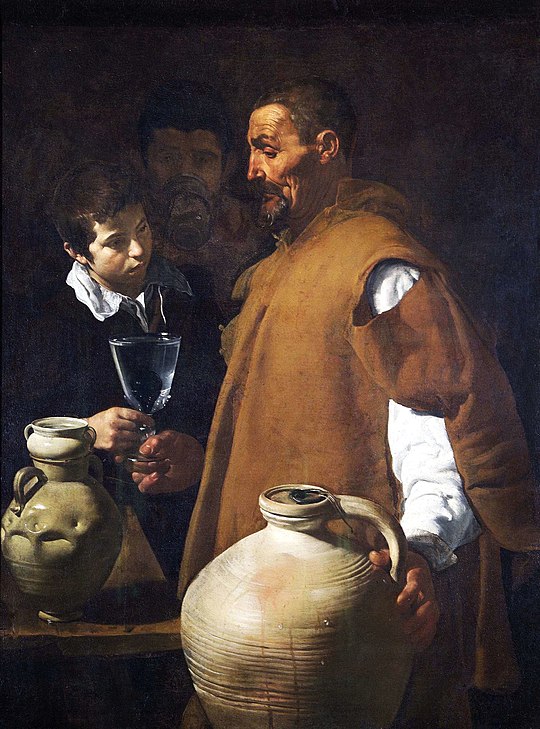
Velazquez's 'Water Seller of Seville'.
Velazquez was a Spanish painter who established himself in Seville as a painter of simple people and their trades. He later moved to Madrid and painted King Philip IV. He also travelled to Italy and painted Pope Innocent X.
7. Rembrandt
Netherlands 1606-1669

Rembrandt Van Rijn - Self Portrait

The Night Watch by Rembrandt
Rembrandt was a painter of the Dutch Golden Age whose work encompassed many subjects. He also established etching as an art form and is considered one of its greatest practitioners.
Rembrandt's deep empathy for humanity shines through in his paintings and he is seen as a colossus and a prophet.
8. Rubens

Peter Paul Rubens
Peter Paul Rubens; artist, scholar, diplomat. He had the honour of being knighted by King Charles I of England and Philip IV of Spain - this in itself would be enough to earn lesser men a place in history. He was also a classically educated scholar.
His main claim to fame is his art which spanned a wide range of subjects and formats from cartoons to outright masterpieces.

Rubens 'The Fall of Phaeton'
9. Jan Van Eyck
Belgium 1380-1441

Jan Van Eyck
One ponders that Van Eyck could ever have guessed that future generations would spend so much time looking at and into his painting 'The Arnolfini Marriage', in London's National Gallery. I have certainly spent time contemplating it.

Arnolfini Wedding by Jan Van Eyck
Van Eyck has been credited with inventing oil painting, and while not all historians agree with that, there is agreement that he set the standard for others to follow and blazed the trail of the Northern Renaissance.
10. Sandro Botticelli
Italy 1445-1510
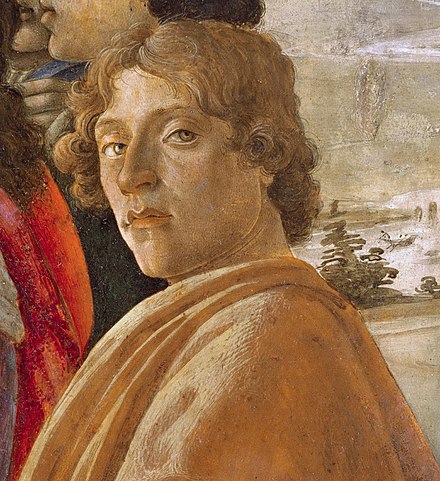
Sandro Botticelli
Botticelli was a figure of the late Italian Renaissance who painted mythological scenes such as the Birth of Venus shown here and also a great many pictures of Madonnas from the Bible.
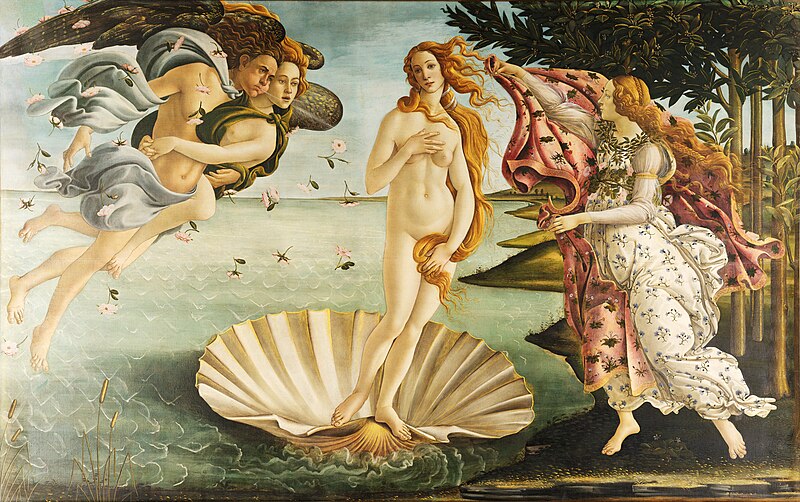
The Birth of Venus by Botticelli
11. Salvador Dali
Spain 1904-1989
Dali is a controversial inclusion so high up in the list. But I feel that his attempt to fuse Freudian theory into his tremendous technical ability makes Dali unique and in some ways like Raphael with his philosophers. Whatever you may think of Freud, the important thing here was Dali's belief in him as an early twentieth century exemplar of modern science and its quest for answers.

Soft Construction with Boiled Beans by Dali
12. Pablo Picasso
Spain 1881-1973
Picasso blazed a trail of artistic audacity though the early and middle twentieth century. Sometimes it is as if Picasso himself was the art in his art. With Vermeer for example we know nothing about him, but his art is still great art. With Picasso what we know about him in some ways makes the art.

The Card Player by Picasso
13. Titian
Italy 1488-1576
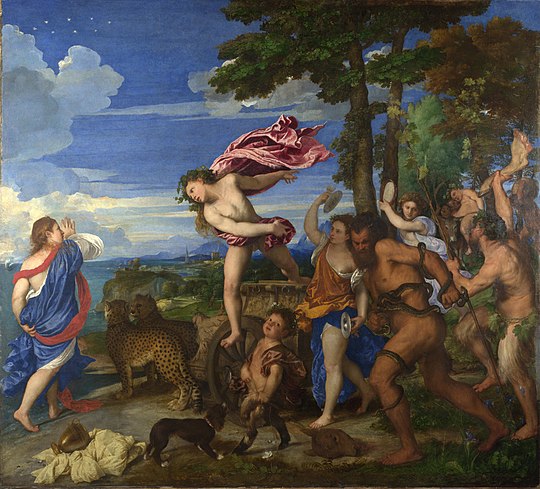
Bacchus and Ariadne by Titian
Titian was an influential painter, much admired by his peers, whose techniques influenced many contemporary and later painters. He was in great demand from Europe's wealthy patrons throughout his professional life. In subject matter he was very versatile, and was adept at landscapes, mythological and religious scenes, and portraits of his wealthy patrons.
14. Gauguin
France 1808-1903
There is a little of Paul Gauguin in the heart of every modern man and woman, who may wonder now and again 'Have cars, televisions, mobile phones, spreadsheets and Human Resources Management really got us anywhere?'. Were we happier in simpler times? Paul Gaugin thought so and spent most of his life trying to find simpler times in the lands of the nineteenth century French Empire, especially Tahiti.

Sacred Spring, Sweet Dreams by Gauguin
15. Roy Lichtenstein
USA 1923-1997
Roy Lichtenstein made a fine art technique out of the process used to print newspapers and cartoon magazines. He also took inspiration from the popular sentiments expressed in those publications. These sentiments when presented in fine art form, can enthral and entertain.
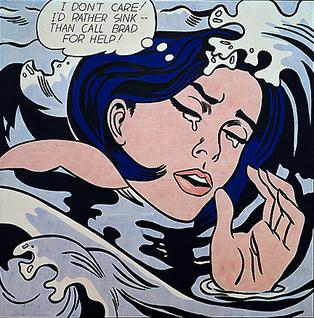
Drowning Girl by Lichtenstein
18. Edward Hopper
USA 1882-1967
Even in his home country the USA, Hopper is a controversial figure. There is no doubt about the compelling distinctiveness of his work; rather the debate is about exactly what type of painter he was. The last of the realists or the first of the pop artists?
To some his paintings speak of the atomised nature of materialistic consumer capitalism. Everyone is on their own even when they are in company with others. Isolation and loneliness seem to lurk everywhere in Hopper's printings.

Nighthawks by Edward Hopper
19. Vincent Van Gogh
Netherlands 1853-1890
Van Gogh has become the legendary tragic figure of modern art. Like his sometime friend Gauguin he sacrificed a lot for his work but saw little recognition or reward during his lifetime. His personal suffering has been well documented in his letters and by those who knew him.
Van Gogh's colourful paintings found great popularity in the twentieth century as faith in religion and the traditional grand aesthetics of the Old masters was replaced by a more limited vision inspired by the ready availability of books, photographs and colour printing. His paintings seemed to simply point to the future; the beauty of life and nature pared down to its basics.

Starry Night by Van Gogh
Van Gogh's colours were powerful and he had a unique painting style of daubing paint onto canvas with thick brush strokes. It looks easy but is in fact very skilful and shows great draftsmanship. There is also for many a dose of his madness in the way he painted - Paul Cezanne unkindly described his paintings as 'works of a madman'.
In spite of his travails Van Gogh was in fact an intellectual whose appreciation of the great themes of his times shows rare insight. And of course breath the beauty and uniqueness of his work is the shadow of the desperation which haunted much of his life.
20. John Michelle Basquiat
USA 1960-1988
In the 1980s America started to come to terms with the damage done by the legacy of slavery and segregation. In fine art this legacy was one of an art world which had locked its doors to black artists. John Michelle Basquiat managed to prize open those doors in the underground art scene of his native New York. Often an artist goes from art galleries and collectors to pop stars but Basquiat started by selling to pop stars then sold to galleries and then art collectors.
Basquiat's lively paintings were a world apart from the formal minimalism which was fashionable in New York at the time.
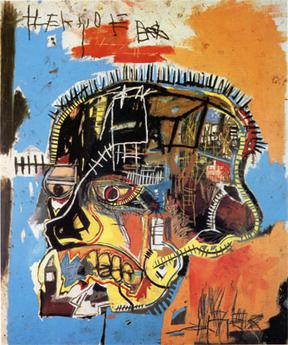
Skull by John Michelle Basquiat
Basquiat was unable to handle his rapid rise to superstar artist status and began to rely on narcotics to cope with the pressures of his fame and what he perceived as a hostile art establishment. Unfortunately heroin killed him before he was 30.
21. Gustave Klimt
Austria 1862-1918
Gustave Klimt's images have a strange familiarity since the age of the permissive 1960s. He pushes sexuality out to the front to add a spicy dimension to his beautifully painted works. Apparently he mixed work and pleasure with the women in his studio and this does translate into a certain excitement on canvas.

The Kiss by Gustave Klimt
22. Vassily Kandinsky
Russia 1866-1944

Yellow-Red-Blue by Kandinsky
Kandinsky trained as a lawyer and began painting at the age of 30. Alas the Soviet authorities soon fault in his work so he moved to Germany and taught at the famous Bauhaus school before the Nazis closed it in 1939. Once again he moved, this time to France, where he remained for the rest of his life.
In addition to his fine and important abstract paintings Kandinsky also developed influential theories about art. He thought that art could be an entirely abstract discipline, invoking sentiments without directly emulating the real world, in the same way as music does.
23. Hieronymus Bosch
Netherlands 1450-1516
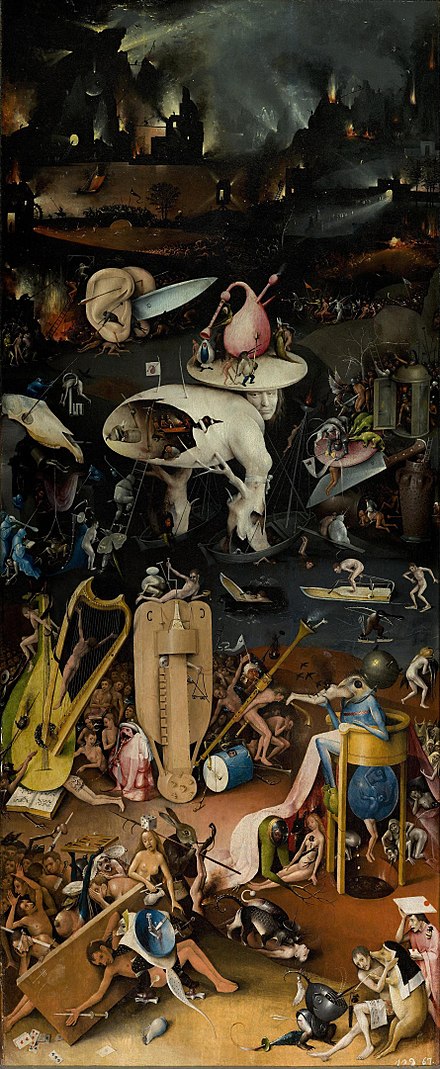
Hell by Bosch from his Garden of Earthly Delights
Bosch was a notable painter of the Early Netherlandish school who painted many fantastical scenes especially his renowned 'Garden of Earthly Delights'. He was hugely popular in his own lifetime in no small part due to the subject matter of his paintings which preyed on the temptations of pleasure versus the fears of the deeply religious communities of his time.
24. Pieter Bruegel the Elder
Netherlands 1530-1569

The Peasant Wedding by Bruegel
Bruegel pioneered landscape and genre painting with his sumptuous landscapes and scenes which depicted the lives of ordinary people.
25. Alphonse Mucha
Czech Republic 1860-1939

Theatre poster of Sarah Bernhardt as Gismonda, by Alphonse Mucha
Mucha is a controversial inclusion, but I loved his contribution to Art Nouveau and the fact that he made graphic art for theatres and advertisements. He became famous during his lifetime due to his unique and unparalleled style.
26. Andy Warhol
USA 1928-1987
Ok so this is one more entry than 25 but I feel that Warhol has a place here. He industrialised art and even named his studio 'The Factory'. His art looked industrialised and mass produced and it was. That was the whole point. Many of his buyers would ask why their painting was not signed and he would answer 'I didn't paint it'. His studio assistants did most of the painting using industrial screen printing techniques.

Campbells Soup tin by Andy Warhol
Warhol also reflected the growing culture of celebrity created by mass communication and mass entertainment. Given today's obsession with celebrity he was ahead of his time.
